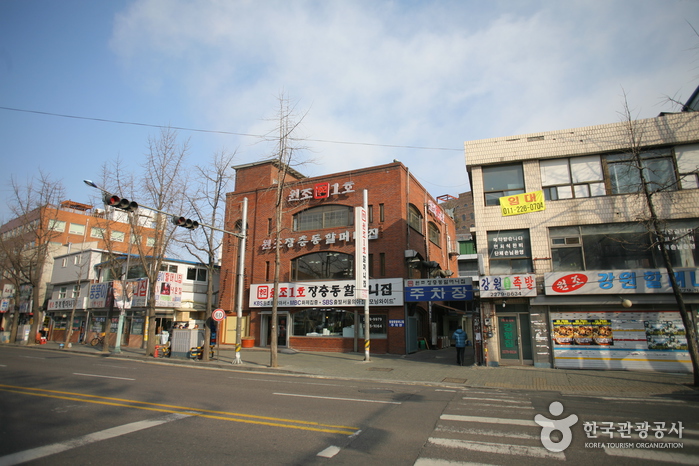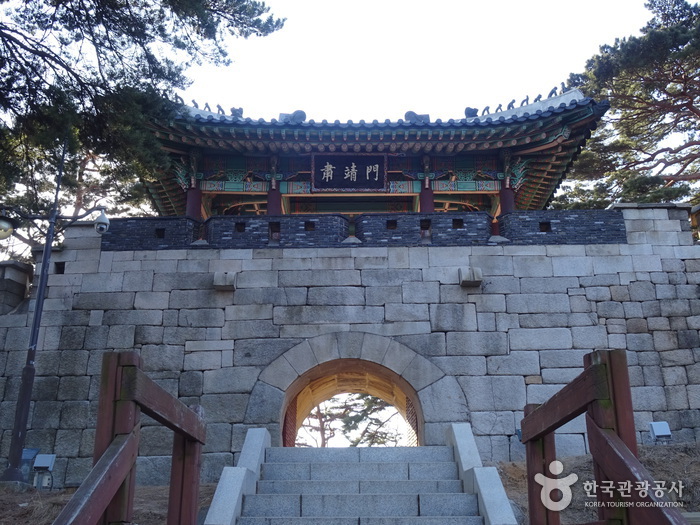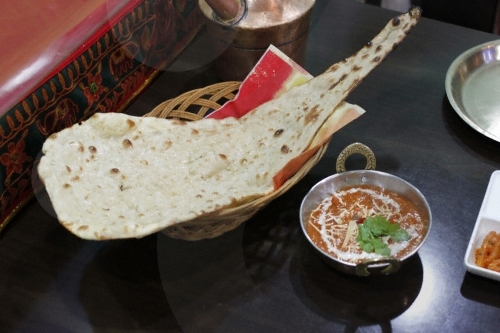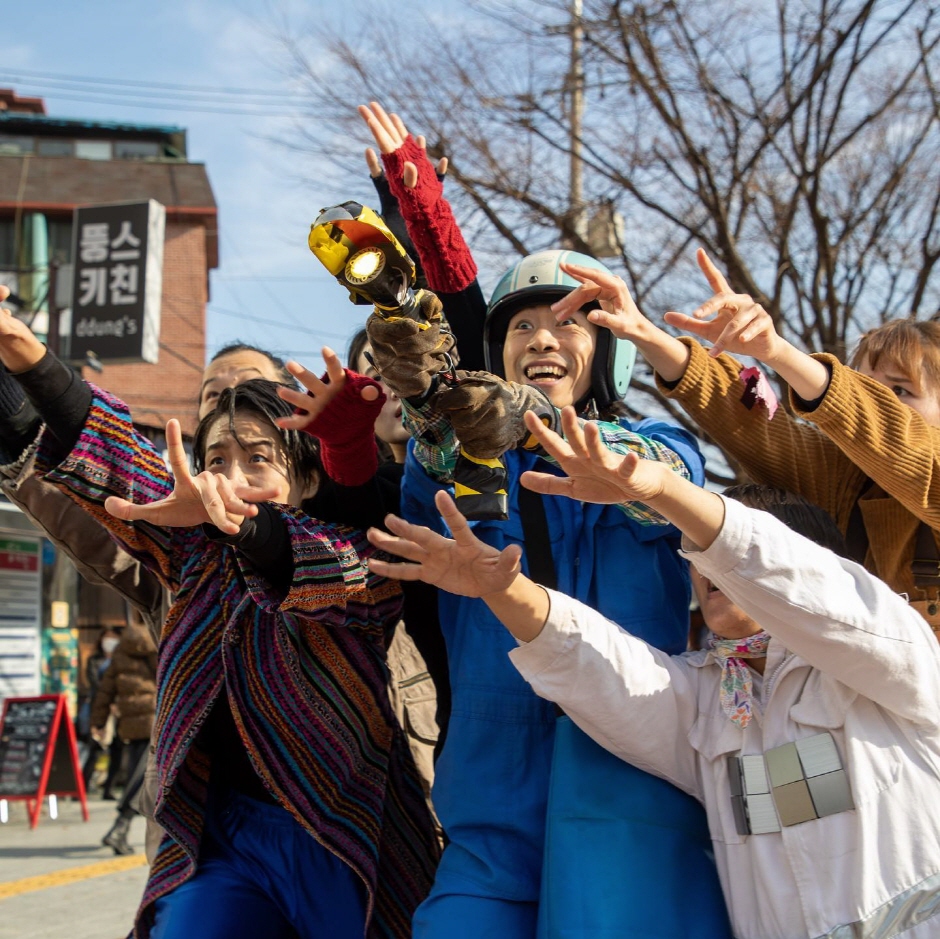Space Moda [Korea Quality]스페이스 모다[한국관광 품질인증]
2.4Km 2025-05-15
19-17 , Samseongyo-ro 6-gil, Seongbuk-gu, Seoul
+82-10-9952-0152
Space Moda is a quiet, modernized hanok nestled in an alley in Seonggwak Village next to Naksan Park in Seongbuk-gu, Seoul, and is let out as a single house. The guesthouse aims for zero waste and low energy use, and encourages sustainable travel. A small yard serves as a resting place for travelers. Guests will enjoy exploring the neighborhood’s many cafes, restaurants, and bars, all a short walk away; while transportation access is good, with Hansung University Subway Station nearby. There is a car park a short distance away.
KPOP HOTEL SEOUL STATAION BRANCH
2.4Km 2021-04-09
16-17, Huam-ro 60-gil, Jung-gu, Seoul
+82-10-8774-5231
K-Pop Hotel is only a 2-minute walk from Exit 10 of Seoul Station on Subway Lines 1 & 4. It’s conveniently located near a number of tourist destinations, since it’s a mere 10-minute walk from Sungnyemun Gate and only a 15-minute walk from Namsan Park. Gyeongbokgung Palace is only a 10-minute ride away, with Insa-dong located a mere 12 minutes away from the hotel. The 24-hour front desk provides express check-in and check-out services as well as a safe deposit box. Featuring Standard Double Rooms, Twin Rooms, and Family Rooms, the hotel is a great place to stay for business travelers and tourists traveling with friend or family. All the rooms are furnished with air conditioner, cable/satellite TV channels, flat screen TV, free Wi-Fi connection, and hair dryer. There is a rooftop terrace and a cafe where breakfast is served. The cafe is also furnished with kitchen, desktop computer, and washing machine, which can be shared among the guests. If you want to park your car more conveniently and quickly, notify the front desk of your arrival in advance.
Cheongun Literature Library (청운문학도서관)
2.4Km 2023-08-16
40 , Jahamun-ro 36-gil, Jongno-gu, Seoul
Cheongun Literature Library is located at the foot of Inwangsan Mountain and can be reached by following the mountain's walking trail starting from Changuimun Gate along the fortress wall. This public hanok library is designed in consideration of the sloped topography and the natural scenery of Inwangsan Mountain. The library consists of two floors: an underground floor and a ground floor. While the ground floor is designed as a traditional hanok, the underground floor is made of concrete to support the hanok building and the spacious outdoor yard. By implementing the natural slope in the library's design, the underground southern entrance is exposed, allowing sunlight to enter. The underground floor features a wide collection of books while the ground floor serves as a place for reading. The natural environment surrounding the library adds to the hanok building's traditional and peaceful charms.
Jangchung-dong Jokbal Street (장충동 족발 골목)
2.4Km 2019-09-26
176, Jangchungdan-ro, Jung-gu, Seoul
+82-2-2236-9135
The phenomenon of Jangchungdong Jokbal Street started 50 years ago with the opening of two Korean jokbal (steamed pig trotters) restaurants, followed by the influx of new jokbal restaurants during the late 70s and early 80s.
Today, the jokbal restaurants continue to serve one of the most sought Korean food from the main road and the alleyways of the Jangchungdong 1(il)-ga Street area.
Choi Sunu House (최순우 옛집)
2.4Km 2021-12-21
9, Seongbuk-ro 15-gil, Seongbuk-gu, Seoul
+82-2-3675-3401
The Choi Sunu House is the old residence of Hyegok Choi Sunu (1916-1984), who lived in this house from 1976 until the day he passed away. The house is designated as Korea’s Registered Cultural Property. Choi Sunu was a leading art historian who served as the director of the National Museum of Korea. He devoted his life to rediscovering the beauty of Korean art and made many academic accomplishments in the areas of Korean ceramics, traditional woodcraft, and the history of painting.
The house has been open to the public as the Hyegok Choi Sunu Memorial Hall since 2004. The memorial hall displays Choi Sunu’s relics as a permanent exhibition and holds special exhibitions in the fall as well as cultural programs every spring and fall.
Olivine Spa (올리바인 스파)
2.4Km 2024-12-10
4-1 Tongil-ro 16-gil, Jongno-gu, Seoul
Chosen as one of the 25 recommended wellness tourist destinations by the Ministry of Culture, Sports and Tourism and the Korea Tourism Organization, Olivine Spa operates a luxury spa and a beauty & slimming center in downtown. The spa also provides professional pre-natal and post-natal massage, body shape care, and various beauty programs in partnership with Seran General Hospital and Olivium (a postpartum care center). Olivine Spa provides massages by top-tier therapists in the industry who will relieve fatigue and eliminate toxins accumulated through daily life. They will help your body become healthier and more balanced, ensuring customer satisfaction. Furthermore, Olivine Spa uses Swiss premium brands Les Nouvels Aroma and Darphin in their programs. Its beauty & slimming center provides customized consulting and various beauty-related medical programs in partnership with medical staff at Seran General Hospital.
Sukjeongmun Gate (북악산 숙정문)
2.5Km 2020-06-19
1, Daesagwan-ro, Seongbuk-gu, Seoul
+82-2-747-2152
Of the Four Great Gates (Sukjeongmun, Namdaemun, Dongdaemun, and Seodaemun), established by King Taejo in 1396, Sukjeongmun is called the north gate.
Located to the north of Seoul, this gate, with Gyeongbokgung Palace in the center and Changaemun (Jahamun) to the right, make up the wings of the north gate. Due to the possible danger of the area being damaged from all the pedestrians, the king in 1413 planted pine trees and prohibited passing this area. Henceforth, Sukjeongmun became a scenic walkway until the North Korean Communist infiltration of 1968, which prohibited the passing of all civilians.
The reopening of Sukjeongmun in April of 2006 has led to the opening of Bugaksan Mountain in April of 2007 and is in the process of dividing it into 3 courses. Bugaksan Mountain has been kept well-preserved due to a long period of restriction in this area, and if you climb the mountain, you will be able to see all of Seoul.
Everest (에베레스트)
2.5Km 2019-09-02
2-1, Jong-ro 51ga-gil, Jongno-gu, Seoul
+82-2-766-8850
Nepal is located in the southcentral region of the Himalayan Mountains between India and Tibet, accounting for its diverse mixture of both country's cultures. Restaurant Everest allows guests to enter this culturally diverse world by offering cuisine from Nepal, India, and Tibet. In addition, Everest is operated by a Nepali owner, serving affordable food to tourists and students interested in the culture of Nepal. Customers can learn of the traditional food and culture of Nepal while listening to Nepali music and watching movies. The restaurant also provides a seminar area for various meetings.
Seongbuk Global Food Festival Nurimasil (성북세계음식축제 누리마실)
2.5Km 2021-11-26
1, Seongbuk-ro 8ga-gil, Seongbuk-gu, Seoul
• 1330 Travel Hotline: +82-2-1330 (Korean, English, Japanese, Chinese) • For more info: +82-2-6906-9298
Seongbuk Global Food Festival Nurimasil provides visitors with a chance to enjoy cultures from around the world in one place through food and arts. It is truly an international event open to visitors worldwide to experience unity and learn more about other cultures.
Wonjo 1ho Jangchungdong Halmeonijip(원조1호장충동할머니집)
2.5Km 2020-11-17
174, Jangchungdan-ro, Jung-gu, Seoul
+82-2-2279-9979, +82-2-2275-1064
Following his mother’s footsteps, the son of the previous owner is now managing the family business. Opened during the early years of Jokbal Street, the delicious meat at this restaurant is fondly remembered by customers. While the meat itself has almost no fat, the fat portion is extremely soft and savory. This restaurant is also different from the others in that it provides kongnamul-guk (bean sprout soup) with the jokbal (steamed pork hock). Pyeongyang-style naengmyeon (cold noodles) and tteok-mandu-guk (rice cake-dumpling soup) are also delicious. Pyeongyang naengmyeon is cooked to suit South Korean tastebuds. Besides, the noodles and dumplings are hand-made. Despite the restaurants long history, the building of the restaurant is clean and well-maintained as it was being rebuilt after a fire in the 1980s. There are plenty of tables on the first and second floors to accommodate customers, and the third floor is reserved for large groups. Especially noticeable is the clean appearance both inside and out, despite the restaurant’s long history; probably because the building was rebuilt after a fire in the 1980s. Plenty of tables on the first and second floors accommodate customers, and the third floor is reserved for large groups.
![Space Moda [Korea Quality]스페이스 모다[한국관광 품질인증]](http://tong.visitkorea.or.kr/cms/resource/80/3490980_image2_1.jpg)







 English
English
 한국어
한국어 日本語
日本語 中文(简体)
中文(简体) Deutsch
Deutsch Français
Français Español
Español Русский
Русский